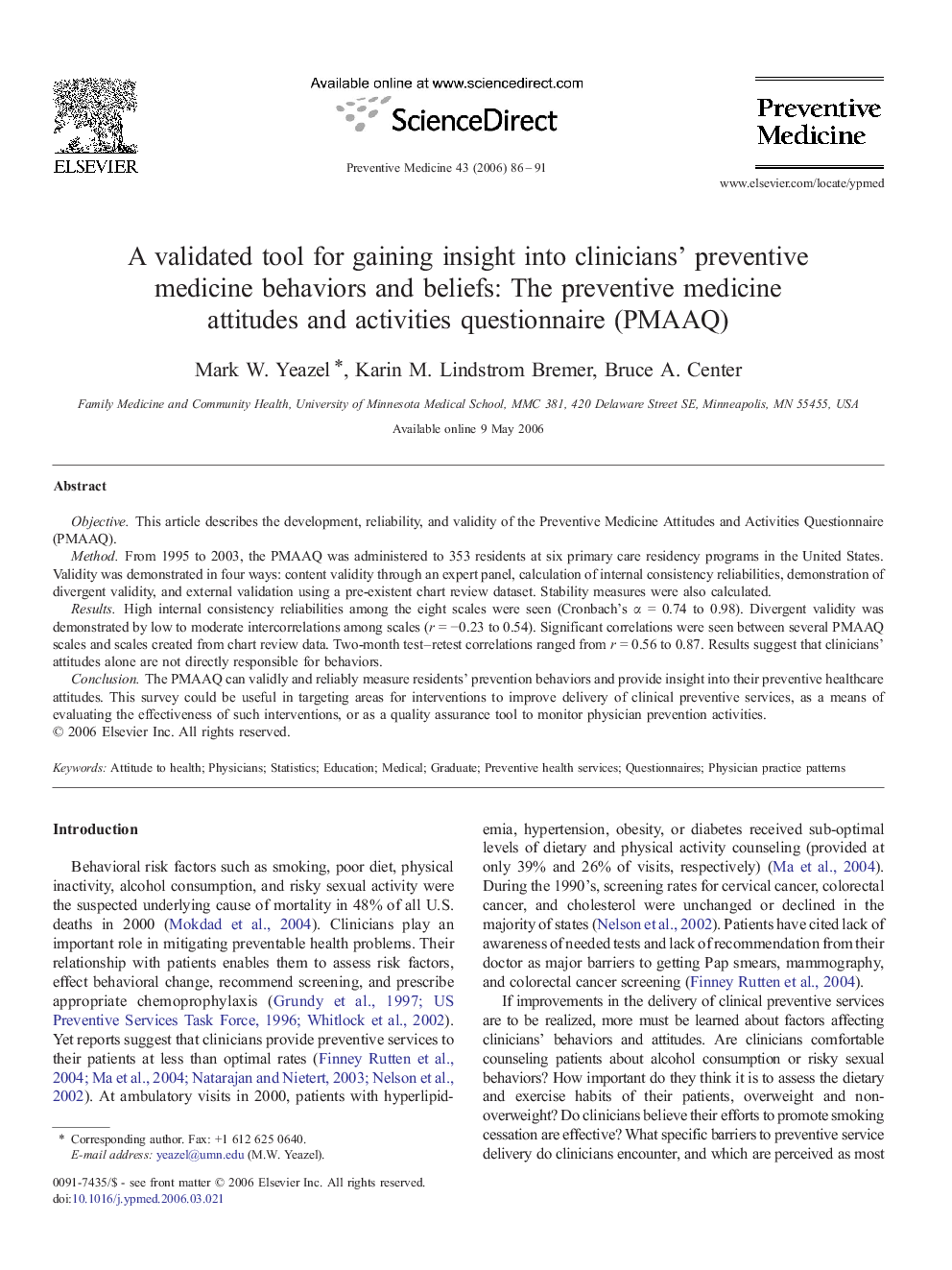| Article ID | Journal | Published Year | Pages | File Type |
|---|---|---|---|---|
| 3101872 | Preventive Medicine | 2006 | 6 Pages |
Objective.This article describes the development, reliability, and validity of the Preventive Medicine Attitudes and Activities Questionnaire (PMAAQ).Method.From 1995 to 2003, the PMAAQ was administered to 353 residents at six primary care residency programs in the United States. Validity was demonstrated in four ways: content validity through an expert panel, calculation of internal consistency reliabilities, demonstration of divergent validity, and external validation using a pre-existent chart review dataset. Stability measures were also calculated.Results.High internal consistency reliabilities among the eight scales were seen (Cronbach's α = 0.74 to 0.98). Divergent validity was demonstrated by low to moderate intercorrelations among scales (r = −0.23 to 0.54). Significant correlations were seen between several PMAAQ scales and scales created from chart review data. Two-month test–retest correlations ranged from r = 0.56 to 0.87. Results suggest that clinicians' attitudes alone are not directly responsible for behaviors.Conclusion.The PMAAQ can validly and reliably measure residents' prevention behaviors and provide insight into their preventive healthcare attitudes. This survey could be useful in targeting areas for interventions to improve delivery of clinical preventive services, as a means of evaluating the effectiveness of such interventions, or as a quality assurance tool to monitor physician prevention activities.
